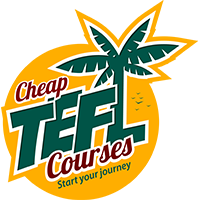
Time is money.
Work smart, not hard.
Life’s too short for lesson prep*.
*Okay, so maybe we made this one up.
We have many sayings in English which remind us how precious our time is and why we shouldn’t waste it. And we agree wholeheartedly. This is why we love a good hack to save us time (and possibly money, too). If you look anywhere on Instagram, Facebook, TikTok, or Twitter, people love sharing hacks that will make our lives a bit easier and make us look like we’re a whole lot smarter than we actually are. So here are our fave hacks for teaching English as a Foreign Language.
Learning names
Using your students’ names in the classroom is very important in creating a friendly learning environment in the classroom. But while your students only need to remember one name (yours), you’ll need to remember at least twenty (for one class) and probably more like 100! When you first teach a class, draw up a plan of the desks on an A4 piece of paper and put it on your desk. Where each student is sitting, write their names on the drawing. During the class, use the plan to remember the names of the students and use them as much as possible. Quickly glancing at the plan on your desk whenever you want to call on a particular student will remind you of their name, and repeating their names throughout the lesson will help you remember them in your next lesson.
Read more: The Importance of Learning Names in the Classroom
Cheap props
If you’re looking for some props for your online lessons, there’s no need to go out and buy new props. Instead, look around your house and see what household items you can use for props. If you have any stuffed toys (yours or your children’s), they make great mascots, or a piece of pretty material or wrapping paper can make a good background.
Homemade mini whiteboards
Mini whiteboards are a great tool in the EFL classroom. Students love writing on the board, and using the mini versions means they can all get a turn to write on them in their groups. There are loads of different classroom games you can do with them too. But rather than spending your dollars on new ones from a stationery shop, you can make your own using hard card or cardboard. You can either cover the card in contact paper or you can laminate it. Either way, you’ll have a perfectly good mini whiteboard basically for free.
Read more: 3 Fun Ways to Use Mini Whiteboards
A challenge folder
If you find yourself prepping extra worksheets to give to your stronger students every lesson, why not make a challenge folder? This is a folder which you keep somewhere in the class. In the folder, you have a whole series of worksheets on different topics – even better is if they relate to the topics or language structures you are doing during the term. If a student finishes an activity quickly in a lesson, they simply have to fetch themselves a worksheet to get on with quietly. If you prep this at the beginning of a term you will never have to worry about this for any of your lessons.
Use someone else’s lesson plan
Don’t worry, this isn’t as dodgy as it sounds. When you start out teaching, planning and lesson prep can take a long time. The thing is, people have been teaching English as a Foreign Language for a long time and it’s easy to take advantage of that fact – there’s no reason to reinvent the wheel. Look online and you’ll find loads of websites with free lesson plans and resources. All you have to do is search for your topic or language point and the level of the class.
Use your whiteboard markers until the very last drop
There’s always one student who doesn’t put the cap back on the whiteboard marker properly and the next time you try to use it you realise it’s dry. If this happens, take off the cap and put the pen nib-side down in a bowl of hot water for a few minutes. Let it dry (without the cap) and it should give you a few more uses. In general, store your pens vertically with the nib down to help them last longer.
How to clean permanent marker off your whiteboard
It’s happened to the best of us: using a permanent marker on our whiteboards instead of our whiteboard markers. It depends how quickly you realise but you could end up with a board full of permanent marker! Fear not, there’s a simple remedy. Write over the permanent marker with a whiteboard marker. You’ll be able to wipe it off easily with your usual whiteboard marker.
Read more: How to Make the Most of Your Resources in the EFL Classroom

Encourage participation
There are a few ways you can help quieter classes become more energetic, and uninvolved students become more engaged. The one way is with a ball. Even with adults, bringing the element of a ball into the lesson is intriguing. When you ask a question throw the ball and whoever catches it must answer the question. They can then throw the ball to someone else for the next question.
The other option is to use pens or rubbers or anything similar. At the beginning of the lesson give each student whatever object you’ve chosen. Whenever they participate in the lesson by volunteering an answer or answering a question, they give the object back to you. The students can’t leave the classroom until they have had their turn.
Stamps for assessment
Marking assignments and assessing work can be very time-consuming. Buy a few stamps (stars or dots or unicorns) in different colours to make the process go quicker. While for many assignments you need to make corrections to the language, sometimes you just need to let your student know if the assignment is good, needs some work, or needs to be totally redone. Instead of having to write Please try again. or No corrections needed. or It’s fine but could be better next time. you can just use your stamp and your students will know what it means.
Ask the class
Our students love to ask questions, but many times another classmate will know the answer. Learning from their peers is a good learning technique and we should encourage it as much as possible. Train your students to ask the class their questions before they ask you. For example, if there’s a question, they can raise their hand and say Does anyone know…? If no one knows the answer then you can answer it.
Easy groupings
To speed up dividing the class into pairs or groups, use stickers. Buy coloured dot stickers and laminate them. When you need to make a grouping, hand out the stickers. Students can then easily find a partner by finding the other student or students with the same colour sticker.
Teaching English as a Foreign Language requires a lot of preparation, planning, and classroom management skills. These hacks will help make your teaching life easier so you can focus on the important stuff: living your best life.
The post 11 Teaching Hacks for TEFL Teachers appeared first on The TEFL Academy Blog.


